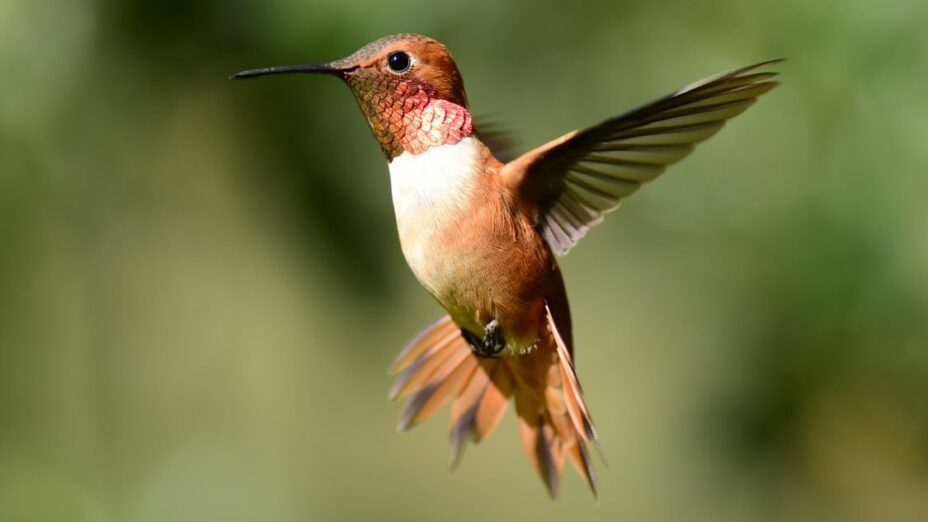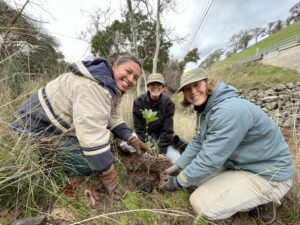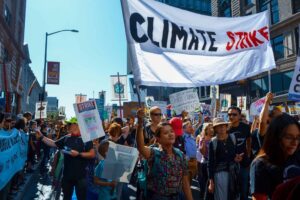
Because of Save Mount Diablo’s focus on protecting Mount Diablo and its surrounding open spaces, the impacts of climate change on local species and ecosystems are a major concern for us.
As climate change continues and average global temperatures warm, the ecosystems our local native species rely on will be put under considerable stress.
In recent years, we’ve been focusing on incorporating practices into our work that sequester more carbon and decrease our organizational carbon emissions.
Solutions to the Climate Crisis: How You Can Help

Human banner from the 2019 global climate strike by Save Mount Diablo and its Conservation Collaboration Agreement partners. Photo: Sean D. Johnson
First some good news: renewable energy is making an impact. In 2022, global emissions rose less than initially feared because of growth in the clean energy sector.
Solar power, wind power, heat pumps, electric vehicles, and more are reducing our impact on the climate, though emissions do continue to rise.
Last year, the US passed the Inflation Reduction Act, a historic investment towards clean energy that is projected to help reduce greenhouse gas emissions to 40 percent below 2005 levels by 2030.
But more must be done to reduce carbon emissions. The state of the world in 2100 (and beyond) depends on the decisions we make today.

Source: Intergovernmental Panel on Climate Change
There is not just one solution to the climate crisis. Addressing it requires a multifaceted approach.
Project Drawdown has put the necessary solutions to the climate crisis into three categories: reducing sources of carbon emissions, supporting carbon sinks, and improving overall society.

Project Drawdown’s framework for climate solutions
Within these categories there are four levels of action: individual, immediate group, community, and systemic.
Save Mount Diablo’s 10,000 Trees and Plants project, for instance, supports local carbon sinks. Planting native plants is one of the many ways that you can help mitigate the climate crisis and provide much needed habitat for native wildlife.

Save Mount Diablo’s stewardship staff planting a sycamore tree. Photo: Sean Burke
To make real lasting change, addressing the climate crisis must go beyond the individual; it must be a community-wide effort that effects long-lasting systemic change.
Think about how you can make a long-term impact within your community. Advocating for policies and sustainable practices that support a climate friendly future is a must if we are to reduce carbon emissions and fight the climate crisis.
There are numerous organizations with local chapters that you can work with to advocate for better climate policies, including:
Check out Juan Pablo Galván Martínez’s latest talk on climate change for a local chapter of the National Audubon Society to learn more.
His presentation covers solutions to the climate crisis and goes further in-depth on the impact it will have on our local bird populations.

Forty thousand marched in San Francisco for the Global Climate Strike on September 21, 2019. Photo by Caleb Castle

